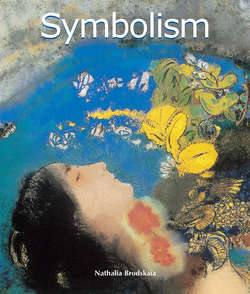Читать книгу Symbolism - Nathalia Brodskaya - Страница 3
Introduction: The Manifesto of Symbolism by Jean Moréas
Symbolism
ОглавлениеLike all arts, literature evolves: a cyclical evolution with strictly determined turns which become complicated by various modifications brought about by the march of time and the upheavals of surroundings. It would be superfluous to point out that each new evolutionary phase of art corresponds exactly to senile decrepitude, to the inevitable end of the immediately previous school. Two examples will suffice: Ronsard triumphed over the impotence of the last imitators of Marot, Romanticism spread its banners over the Classical debris that was poorly guarded by Casimir Delavigne and Étienne de Jouy. It is that every manifestation of art fatally manages to impoverish itself, to exhaust itself; then, from copy to copy, from imitation to imitation, what was once full of sap and freshness dries out and shrivels up; what was the new and spontaneous becomes the conventional and the cliché.
And so Romanticism, after having sounded every tumultuous alarm of revolt, after having had its days of glory and battle, lost its strength and its grace, abdicated its heroic audacities, made itself orderly, sceptical and full of good sense: in the honourable and paltry attempt of the Parnassians it hoped for deceptive revivals, then finally, like a monarch fallen in childhood, it let itself be deposed by Naturalism, to which one can only seriously grant a value of protest, legitimate but ill advised, against the dullness of some then fashionable novelists.
A new manifestation of art, therefore, was expected, necessary, inevitable. This demonstration, incubated for a long time, has just hatched. And all insignificant anodynes of the joyful in the press, all the concerns of serious critics, all the bad temper of the public, surprised in its sheeplike nonchalance, only further affirm every day the vitality of the present evolution in French letters, this evolution noted in a hurry by judges, by an incredible discrepancy, of decadence. Notice, however, that the Decadent literature proves essentially to be tough, long-winded, timorous and servile: all the tragedies of Voltaire, for example, are marked by these specks of Decadence. And with what can one reproach, when one reproaches the new school? The abuse of pomp, the queerness of metaphor, a new vocabulary or harmonies combining themselves with colours and lines: characteristics of any renaissance.
We have already proposed the name of Symbolism as the only one capable of reasonably designating the present tendency of the creative spirit in art.
It was mentioned at the beginning of this article that the evolution of art offers an extremely complicated cyclic character of divergences: thus, to follow the exact filiations of the new school, it would be necessary to go back to certain poems of Alfred de Vigny, back to Shakespeare, back to the mystics, further still. These questions would demand a whole volume of commentaries; therefore, let us say that Charles Baudelaire must be considered as the true precursor of the current movement; Stéphane Mallarmé allots to it the sense of mystery and the ineffable; Paul Verlaine broke in his honour the cruel hindrances of verse that the prestigious fingers of Théodore de Banville had previously softened. However, the supreme enchantment is not yet consumed: a stubborn and jealous labour requires newcomers.
As the enemy of plain meanings, declamation, false sentimentality and objective description, Symbolic poetry seeks to clothe the Idea in a sensual form which, nevertheless, would not be its goal in itself, but which, while serving to express the Idea, would remain exposed. The Idea, in its turn, must not be deprived of external analogies; because the essential character of Symbolic art consists of continuing until the concentration of the Idea in itself. Thus, in this art, scenes from nature, the actions of humans, and all concrete phenomena cannot manifest themselves for their own sake; here they are the sensual appearances intended to represent their esoteric affinities with primordial ideas.
The accusation of obscurity thrown in fits and starts by readers against such an aesthetic has nothing which can surprise. But what to do? The Pythian Odes of Pindar, Shakespeare’s Hamlet, Dante’s Vita Nuova, Goethe’s Faust Part II, Flaubert’s The Temptation of Saint Anthony – were they not also taxed by ambiguity?
For the exact translation of its synthesis, Symbolism needs: a complex and archetypical style; unpolluted terms, the period that braces itself alternating with the period with undulating lapses, meaningful pleonasms, mysterious ellipses, the anacoluthon in suspense, all too audacious and multiform; and, finally, good language – instituted and modernised – the good and lush and spirited French language from before Vaugelas and Boileau-Despréaux, the language of François Rabelais and Philippe de Commines, Villon, Ruteboeuf and so many other free writers, darting the term of the language like so many Thracian Toxoteses with their sinuous arrows.
Rhythm: the ancient metrics revived; a learnedly ordered disorder; rhyme hammered like a shield of gold and bronze, near rhyme with abstruse fluidities; the Alexandrine with multiple and mobile stops; the use of certain prime numbers – seven, nine, eleven, thirteen – solved in various rhythmic combinations of which they are the sums.
Here I beg permission to make you attend my small INTERLUDE drawn from an invaluable book: The Treatise on French Poetry, where M. Théodore de Banville mercilessly thrusts, like the god of Claros, monstrous donkey’s ears on the head of Midas.
Attention!
The characters who speak in this piece are:
A DETRACTOR OF THE SYMBOLIC SCHOOL
MR THEODORE DE BANVILLE
ERATO
Louis Welden Hawkins, The Halos, 1894.
Oil on canvas, 61 × 50 cm.
Private collection, Paris.
